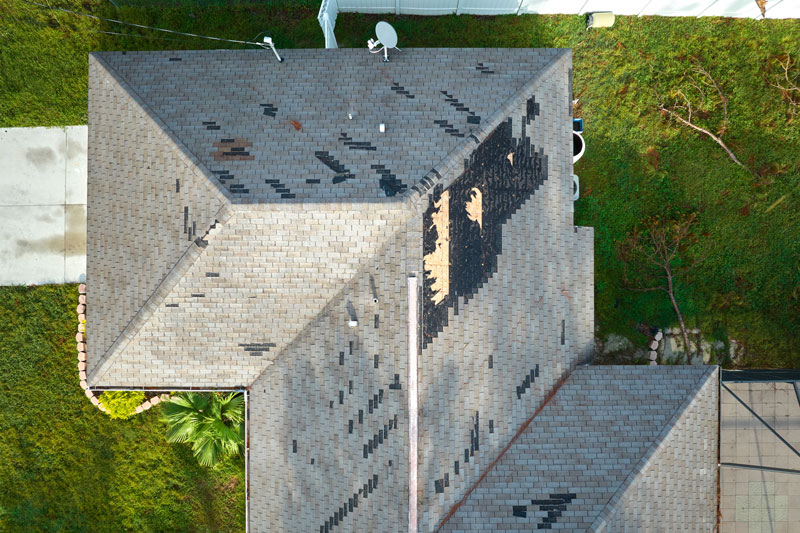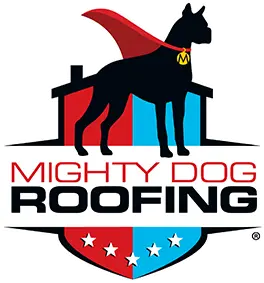Hurricane Season Prep: Roof Protection Tips for Toms River, NJ Homeowners
Hurricane season on the Jersey Shore is a familiar reality for homeowners in Toms River. With strong winds, heavy rain, and storm surges, your roof must be ready to stand up to the challenge. Small weaknesses can quickly turn into storm damage that leads to roof leaks, structural damage, and costly repairs. Preparing your roof in advance—by inspecting shingles, flashing, gutters and downspouts, and even your attic—can prevent water intrusion and protect your home’s structural integrity. Mighty Dog Roofing of South Jersey has helped countless Toms River homeowners prepare their roofs for storm season, combining local expertise with proven storm-resilient practices.
Understanding Toms River’s Hurricane History
Toms River’s location makes it vulnerable to both hurricanes and tropical storms. Events like Superstorm Sandy reshaped local building codes and reminded homeowners that a leaky roof or missing shingle can open the door to serious water intrusion. Climate data shows more extreme rainfall, flooding, and wind uplift events in the future, meaning homes must be storm-ready not just this year, but for the long term.
Building codes in New Jersey set minimum safety standards, but exceeding them with upgraded roofing materials, hurricane straps, and reinforced connections is often the best way to prevent future damage.
Roof Inspection: Identifying Signs of Vulnerability
A thorough roof assessment should include both exterior and attic inspections:
- Roof shingles: Check for missing, cracked, or curled shingles. These are signs of water intrusion waiting to happen.
- Roof slope and pitch: Steeper, sloping roofs shed water faster, but valleys and flat roofs need special attention since water tends to pool there.
- Flashing: Inspect metal flashing tape around chimneys, skylights, and roof windows. Lifted or rusted flashing can allow leaks.
- Attic check: Look for water stains, damp insulation, mold, or other signs of water intrusion. These point to hidden roof leaks.
- Gutters and downspouts: Make sure they are securely attached, free of debris, and directing water away from exterior walls and foundations.
Always document the condition of your roof with photos. Time-stamped images provide proof of roof condition and can make the insurance process smoother after a storm.

Quick Fixes Before a Storm
Not all repairs require a professional immediately. Some quick homeowner actions can make a difference:
- Re-secure or replace loose shingles using roofing nails or adhesive.
- Seal lifted flashing with roofing cement or metal flashing tape to prevent wind-driven rain.
- Fasten vents and collars tightly with corrosion-resistant screws.
- Remove debris from valleys and check for affected areas where the roof rises unevenly.
If you have a steep roof pitch or extensive issues, call a licensed roofer. Safety should always come first.
Gutters, Soffits, and Preventing Water Intrusion
Water causes as much damage as wind during a hurricane. Protect your home by:
- Cleaning gutters and downspouts so they drain freely.
- Checking for sagging sections or joints that could lead to leaks.
- Inspecting soffits and fascia for rot or insect damage.
- Installing gutter guards to reduce clogs while ensuring proper water flow.
Clear valleys, scuppers, and flat roof drains after each storm. Preventing water intrusion protects your roof’s structural integrity and prevents future mold growth.
Types of Roofs and How They Handle Storms
Different types of roofs face different risks during hurricane season. Understanding how roof slope and roofing materials affect performance can help you prevent future damage.
- Flat roofs: Common on some coastal homes, they are more vulnerable to ponding water and need extra drainage systems. Waterproof membranes and regular inspections are key.
- Sloping roofs: Shed water quickly, but valleys and transitions require reinforced flashing.
- Steep roof pitch: Often better at preventing water intrusion, but high winds can create uplift along edges if shingles or flashing are loose.
- Roof windows and skylights: Beautiful for natural light but vulnerable in storms. Strong glazing and reinforced flashing are essential.
- Roofing materials: Asphalt shingles are common but may not resist the strongest winds. Metal roofs and synthetic shingles often provide better long-term resilience.
Knowing how your roof type interacts with local building codes, storm wind ratings, and coastal weather is crucial for choosing upgrades.
Contractor Upgrades: Building a Storm-Ready Roof
For long-term protection, consider upgrades that go beyond minimum code:
- Hurricane straps: Metal connectors that tie the roof to exterior walls, dispersing wind uplift forces.
- Impact-resistant shingles: Designed to handle flying debris and resist high winds.
- Reinforced underlayment: Acts as a secondary barrier against water intrusion.
- Improved ventilation: Helps control attic humidity levels and prevents structural damage from trapped moisture.
- Roofing materials: Options like metal roofing, slate, and synthetics perform better in high winds than standard asphalt shingles.
Local contractors like Mighty Dog Roofing of South Jersey provide professional inspections, recommend storm-rated roofing materials, and install hurricane straps and other reinforcements that meet or exceed New Jersey’s building codes. These measures create a layered defense that makes your home more resilient during hurricane season.
Insurance, Documentation, and After the Storm
Good documentation ensures faster claims and fewer disputes:
- Take date-stamped photos of shingles, flashing, roof slope, and gutters before and after storms.
- Keep receipts for repairs, tarps, and contractor work.
- Save contracts, estimates, and adjuster notes in one place.
- Avoid making permanent repairs until your insurer has inspected the affected area.
Temporary measures like tarping damaged sections are expected and can prevent future interior damage while you wait for approval.
Beyond the Roof: Exterior Storm Prep That Helps Your Roof
Your roof doesn’t stand alone—other exterior factors contribute to whether it weathers the storm:
- Trim trees: Remove branches that overhang your roof to reduce the risk of punctures.
- Check exterior walls: Repair cracks and gaps where wind-driven rain could travel upward into roof connections.
- Secure siding: Loose siding panels can peel away and damage roofing materials.
- Reduce airborne risks: Secure outdoor furniture, grills, and lightweight items that could impact the roof in high winds.
By treating your home as a complete system, you reduce the stress and uplift forces placed on the roof itself.
Frequently Asked Questions
Should I secure outdoor furniture before a hurricane?
Yes. Move lightweight items inside and tie down heavier ones to prevent windborne debris.
Are roof windows and skylights more at risk?
Yes. Roof windows face higher impact risk and require reinforced glazing, flashing, and sometimes shutters to reduce storm damage.
How can I spot signs of water intrusion early?
Look for water stains on ceilings, peeling paint, damp insulation, or musty odors. These are classic signs of a leaky roof.
What’s the role of roof slope in storm prep?
A sloping roof sheds water more effectively than flat roofs, but valleys and low-slope areas need extra flashing and sealing to prevent ponding water.
Do local building codes fully protect my home?
Codes in New Jersey address minimum safety, but exceeding them with hurricane straps, impact-rated shingles, and reinforced connections offers better long-term protection.
The Bottom Line for Toms River Homeowners
Hurricane season demands more than last-minute fixes. By combining routine inspections, quick DIY safeguards, contractor upgrades, and strong documentation, you can prevent future structural damage and improve your home’s long-term resilience.
Every roof is different—factors including roof pitch, roofing materials, and overall age affect vulnerability. But with proactive care, Toms River homeowners can face each hurricane season with greater confidence and a stronger roof overhead. For trusted inspections, maintenance, and storm-ready upgrades, Mighty Dog Roofing of South Jersey is the local roofing contractor homeowners rely on across Toms River, Brick, Barnegat, Bayville, and Ocean County.


